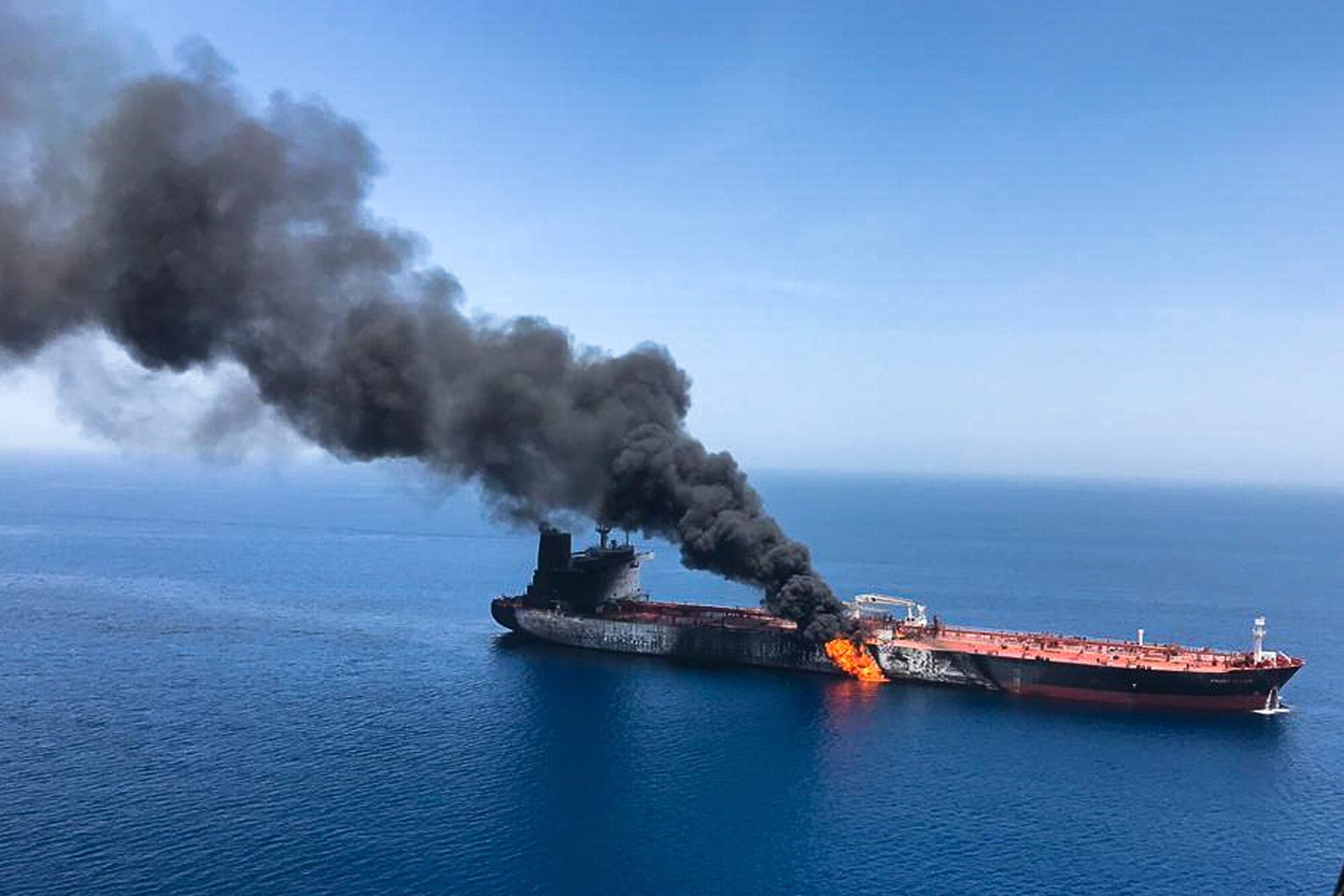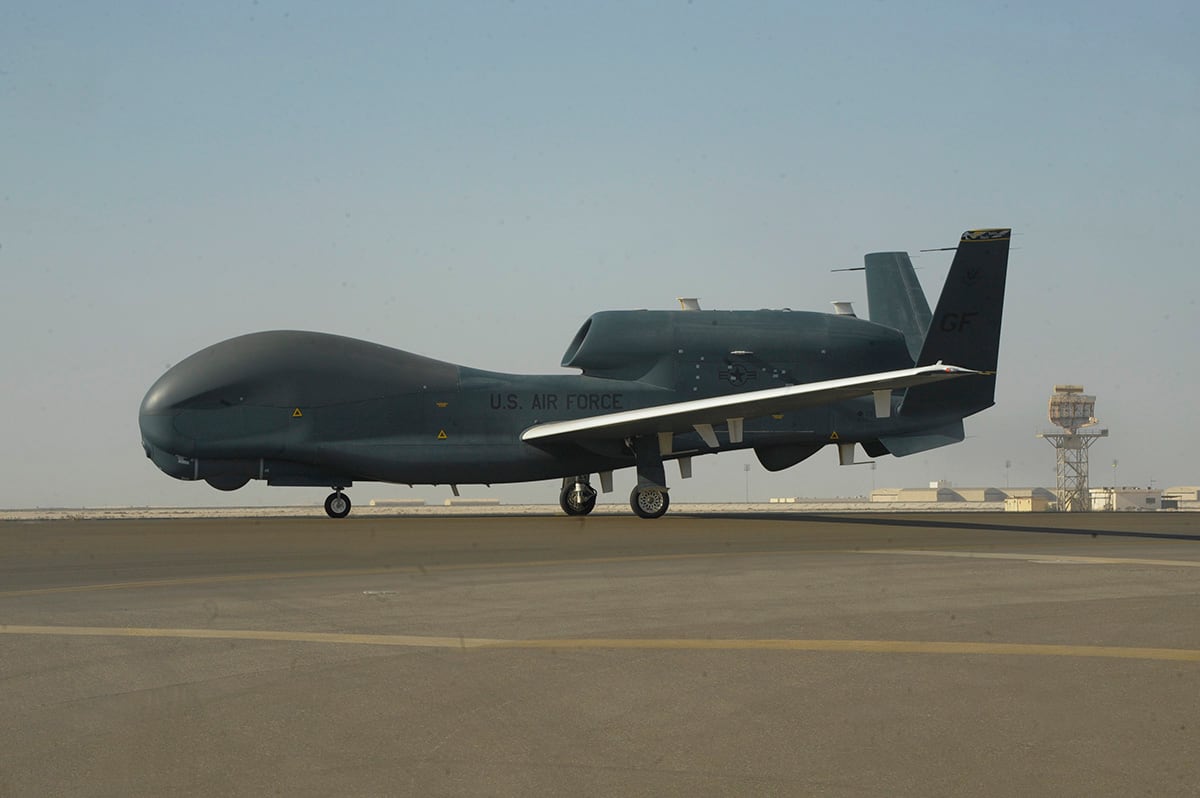[Editor’s note: This commentary has been edited to reflect the fact that the nuclear deal with Iran was never a “treaty” because it was never ratified by the U.S. Congress.]
It was late August 2014.
I was one of the handful of American military forces in Baghdad, Iraq’s capital. Only a few months before, ISIS laid siege to vast sprawls of northern Iraq and northeastern Syria. As part of the 300 special operations troops sent in by President Obama, I was the senior joint terminal attack controller for the task force in Baghdad. I would soon help establish the strike cell that coordinated the first airstrikes against ISIS in central Iraq.
Initially, the U.S. mission in Iraq was limited: Prevent ISIS from taking Baghdad, threatening the U.S. Embassy, or approaching northern Iraq’s Kurdish capital of Irbil. But once we realized the horrendous scale of the ISIS reign of terror, and the level of strength and sophistication they had militarily, we could no longer turn a blind eye. When it was clear that the Iraqis and Kurds could not stop ISIS alone, we were given the mission to stop the ISIS juggernaut.
In early August 2014, we kicked off a furious U.S. and coalition airstrike campaign — supporting Iraqi and Kurdish forces with airstrikes in their ground counter-assaults against ISIS. We soon stopped ISIS from its violent advance on Irbil, freed thousands of minority Yazidis trapped on Sinjar Mountain after ISIS had committed horrific acts of genocide and terror against the minority tribe, and broke ISIS’ siege on the Mosul dam.

By late August, our attention turned to a small town called Amerli — about 60 miles from the Iranian border. Comprised mainly of a minority Shia-Turkmen population, ISIS had kept the town surrounded since June, and the forces inside couldn’t hold out much longer. The U.N. soon warned about another possible genocide by ISIS, similar to what we’d seen against the Yazidis at Sinjar.
For the operation to take back Amerli, Maj. Gen. Dana Pittard — then the U.S. ground forces commander in Iraq — along with U.S. special operations leadership, organized an unprecedented military alliance. From the north would come the Kurdish Peshmerga, from the southwest, Iraqi conventional and special operations forces, and from elsewhere a host of Shia militias would join the fight — militias that, during the long years of the Iraq War, had most often been our enemies.
Even more striking was that the Shia militias were backed and supported by Iran’s famed Quds Force, which since 2007 the U.S. had designated a sponsor of terrorism for its support of the Taliban, Hezbollah, Hamas and other terrorist entities across the Middle East.
Iran, being a Shia-aligned regime, saw an equal enemy in the Sunni-branded ISIS, so much so that they dispatched their Quds Force to assist the partnered Iraqi Shia militias and fight ISIS alongside both Sunni and Shia Iraqi military forces, Kurdish Peshmerga, and American advisers using U.S. and coalition air support.
It was extraordinary. The unlikely coalition liberated Amerli from ISIS in less than two days. Ever since, Iraq’s Shia militias — still backed by Iranian special operations forces — have continued their indirect alliance with the U.S. coalition against ISIS.
To be clear, Iran hasn’t been our “friend.” We’ve had an undeniably sordid relationship for decades. From the Iranian revolution in 1979, leading to the Iran-Iraq war and our subsequent backing of Iraq, to the many terrorist clients of Iran with their long history of attacks and subterfuge against U.S. allies and interests in the Middle East. And of course, there is Iran’s nuclear weapons program, which they have insisted does not exist. Our relationship with Iran has been one of mutual distrust and conflicting interests.

But there is hope.
That hope is illustrated in phenomena like Iran-supported Shia militias fighting alongside the U.S. coalition against ISIS. And it is illustrated in another little-known but salient fact — in June of 2014, before the U.S. had committed to a full-scale military campaign against ISIS, Iran was vital in re-fitting the broken Iraqi air force to help them beat back the ISIS advance. Iran sold the Iraqi military a handful of Russian Su-25 strike aircraft, and hosted a select group of Iraqi pilots in Iran for a crash course on the jet so that the Iraqi air force could support their embattled ground forces with airstrikes.
Fast-forward to May 2018, when President Trump pulled the United States out of a multi-nation nuclear deal with Iran orchestrated three years before by the Obama administration. By all reports, the Obama administration’s deal had since resulted in a significant draw-down of Iran’s enriched uranium stockpile, as well as a gross reduction in Iran’s capability to rapidly manufacture nuclear weapons. But, the Trump administration viewed the Joint Comprehensive Plan of Action, signed by the US, Iran, UK, Russia, China, France, Germany and the EU, as a failed and one-sided deal, and by November had re-instituted the crippling sanctions that Obama also had lifted — targeting then not only Iran, but any states that trade with it.
Over the past few months, as an indirect (or perhaps direct) consequence, we’ve seen intelligence reports of Iranian threats against U.S. interests and troops in Iraq and elsewhere in the Middle East. In response, we first deployed an additional carrier strike group and bomber task force to the region, and re-deployed a Patriot missile battery.
Those actions were met by chest-beating from Iran’s leadership, threatening military action against U.S. forces in the event of aggression against Iran. That rhetoric was quickly matched by a Tweet from President Trump in which he proclaimed, “If Iran wants a fight, that will be the official end of Iran. Never threaten the United States again!”
Now, over the past few weeks, we have seen covert military attacks carried out against international oil tankers in the Gulf of Oman, with U.S. intelligence pointing the finger at Iran. And as a result of an increased perception among U.S. military and intelligence officials of potential for Iranian military action against our forces in the region, the Trump administration has deployed an additional 1,500 troops, and has been reviewing plans to send up to 120,000 as a contingency plan for full-scale war against Iran.
The highly publicized June 20 shoot-down of an American RQ-4 Global Hawk drone by Iran put the situation in its worst spot thus far. Iranian officials insisted our drone was in Iranian airspace, and was shot down over their territorial waters. Of course, U.S. officials insisted otherwise.
As The New York Times first reported that night, President Trump quickly authorized retaliatory strikes against a “handful of Iranian targets, like radar and missile batteries,” but then, as the operation to carry out the strikes was in progress, abruptly ordered a stand down.
It was a good call.
One thing is clear — if we had carried out retaliatory strikes against Iran, things would surely not stop there. There would be real potential for rapid escalation into full-scale war. I spent a career back and forth to the Middle East hunting our nation’s enemies across Afghanistan, Iraq, and Syria. I know exactly what the United States military is capable of. We would absolutely devastate Iran’s forces. But I also know the costs and the long-term consequences of war — I’ve seen them first-hand. War is an ugly endeavor, devastating to populations, infrastructure, economies and political systems. It should neither be frivolously threatened nor hastily considered.
I am certain that Iran, and the Iranian people, do not want war with the United States. It is known that the Iranian people themselves are struggling economically. Further, Iran’s government and military leaders know full well that it would be futile to go to war with us. It would be devastating to their country.
A war with Iran, in particular, would be especially tragic. We would lose American lives, most certainly, and Iran would see a vast loss of life among both soldiers and civilians. Because no matter how much we strive to limit civilian casualties, they will always occur. And if the Iranian government and military forces are anything like our recent enemies — the Taliban, al -Qaida, ISIS, the Saddam regime and other totalitarian regimes, their desire to prevail against us would outweigh their concerns to protect their own populace. There would be massive civilian loss of life brought on by Iran’s own military actions —whether inadvertent or otherwise.
So, was a drone truly worth another war?

President Trump explained that he stopped the strikes in order to avoid what would have been an estimated 150 Iranian military casualties, and clarified it was a casualty cost that he did not deem as proportional to the loss of an unmanned drone. And if we can believe Iranian officials in their second claim, Iran had refrained from simultaneously shooting down a U.S. Navy P-8 Poseidon carrying a crew of 35 that they say was also violating their airspace.
Mr. President, the order to abort the strikes was an exceptionally good call.
Regardless of the precise location of our drone when it was shot down, we know we were conducting surveillance. Iran’s actions were merely a show of force, and we should hardly be intimidated. The Iranian government should be dealt with, absolutely, but not with military force. Not yet, anyway.
President Trump’s quick call to avoid escalation has given us all a temporary respite from war with Iran. Still, senior U.S. officials need to take a step back. If we are truly at a place where we were considering full-on military action over a robotic hunk of metal, then we are at a place where diplomacy has taken a far back seat and strong-arming with military force to meet objectives in the Middle East has become our go-to.
And what of the immediate threat to our warfighters on the ground in Iraq and elsewhere in the region? Iran could potentially inflict serious U.S. casualties with artillery and missile barrages before we managed to stop them. As a former warfighter — with friends and colleagues on the ground — I’m more than disappointed in the senior military advice to President Trump.
We know we share at least some common ground with Iranian interests — that has been demonstrated in our indirect alliance with Iranian forces in the fight against ISIS. Any strategy we take towards Iran should be born from such an understanding. We need to approach Iran from the standpoint of shared goals.
If, in the end, war becomes the necessary option, then the United States and its allies will prevail militarily. But if we go down that road, will we ever truly “win”? Will we really be victorious in our endeavor to bring long-term peace and stability to the people and nations of the Middle East? In the case of war with Iran, I don’t believe so.
There must be a better way.
Wes J. Bryant is co-author of the upcoming book “Hunting the Caliphate: America’s War on ISIS and the Dawn of the Strike Cell.” He is a former special operations tactical air control party-joint terminal attack controller in the elite special warfare branch of the U.S. Air Force, and retired as a master sergeant in 2018. He is now an author and military analyst, who strives to be an advocate and intelligent voice for the combat veteran.





